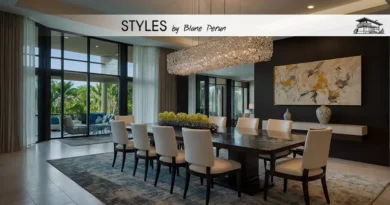Mediterranean Style
Unveiling the Charm of Mediterranean Interior Design: A Modern Sanctuary
When you step into a space adorned with Mediterranean interior design, it’s like being whisked away to a serene, sun-drenched coastal region where time slows down, and every detail tells a story. This design style, reminiscent of the azure seas, sandy shores, and lush landscapes of the Mediterranean region, blends functionality with aesthetics, creating spaces that are not only beautiful but also incredibly inviting. The essence of Mediterranean interior design lies in its ability to merge traditional elements with modern sensibilities, making it a timeless choice for those looking to infuse their homes with warmth, color, and a hint of rustic charm.

The Core Elements of Mediterranean Style
The Palette of the Sea and Sky
At the heart of Mediterranean interior design is its distinctive color palette, inspired by the natural landscape of the Mediterranean region. Think of the deep blues of the sea, the soft whites of sandy beaches, and the earthy tones of the coastal terrain. These colors not only reflect the external environment but also contribute to a calming and refreshing interior atmosphere, perfect for creating a tranquil sanctuary in your home.
Embracing Natural Materials
Mediterranean design is deeply rooted in the use of natural materials, which not only enhances its aesthetic appeal but also promotes sustainability. Materials like terracotta, wrought iron, and rustic wood are staples in this design style, bringing a touch of nature indoors. These materials are not only durable but also possess an inherent beauty that adds depth and character to any space.
Architectural Features and Textures
The Magic of Archways and Exposed Beams
One of the most recognizable features of Mediterranean architecture is the use of archways and exposed beams. These elements not only serve structural purposes but also add a sense of grandeur and openness to spaces. Archways, in particular, create smooth transitions between rooms, while exposed wooden beams add a rustic charm that is synonymous with Mediterranean aesthetics.
The Allure of Textured Walls
Textured walls are another hallmark of Mediterranean interior design, adding dimension and character to rooms. Techniques such as stucco or plastering are often used to achieve a rugged yet elegant finish, reminiscent of the ancient buildings found throughout the Mediterranean region. This approach to wall treatment not only adds visual interest but also plays with light and shadow, enhancing the overall ambiance of a space.
Furniture and Decor
Timeless Furniture with a Modern Twist
Furniture in Mediterranean interior design often strikes a balance between traditional craftsmanship and modern comfort. Pieces are typically sturdy and made from natural materials, with intricate details and soft, comfortable upholstery. The key is to choose furniture that feels timeless yet fits the practical needs of modern living, creating spaces that are both stylish and functional.
Accents and Accessories: Bringing the Outdoors In
Accessorizing in Mediterranean interior design is all about bringing the outdoors in and adding personal touches that reflect the homeowner’s style and travels. Decorative elements such as mosaic tiles, wrought iron fixtures, and vibrant textiles are used sparingly to add pops of color and texture, while potted plants and natural fibers help to blur the lines between indoors and outdoors, creating a seamless connection with nature.
Conclusion
Mediterranean interior design is more than just a style; it’s a way of life that celebrates the beauty of simplicity, nature, and craftsmanship. It offers a sanctuary where one can unwind, reflect, and enjoy the company of family and friends in a setting that feels both luxurious and down-to-earth. Whether you’re drawn to its rustic charm or its serene color palette, incorporating Mediterranean elements into your home can transform it into a personal retreat that feels like a getaway every day.

FAQs about Mediterranean Interior Design
What colors are typical in Mediterranean interior design?
Mediterranean interior design is known for its warm, earthy tones like terracotta, ochre, and sandy beige, complemented by accents of sea blue and lush green. These colors reflect the natural landscape of the Mediterranean and create a calm, inviting atmosphere.
How can I incorporate Mediterranean design elements into a small space?
To infuse a small space with Mediterranean charm, focus on light, airy colors to make the space feel larger, use natural materials like wood and stone for furniture and accents, and choose decorative elements that have a functional purpose to avoid clutter.
What materials are commonly used in Mediterranean interior design?
Natural materials are a cornerstone of Mediterranean design, with a preference for terracotta tiles, stone, wrought iron, and rustic wood. These materials not only add warmth and texture but also connect the interior space to the natural beauty of the Mediterranean landscape.
Can Mediterranean interior design be modernized?
Absolutely! Modern Mediterranean design combines traditional elements like natural materials and earthy colors with contemporary furniture and minimalist decor. The key is to maintain a balance between old and new, creating a space that feels both timeless and current.
How important are outdoor spaces in Mediterranean interior design?
Outdoor spaces are integral to Mediterranean design, reflecting the region’s lifestyle that blurs the lines between indoors and outdoors. Balconies, patios, and courtyards are designed to be extensions of the interior, with similar materials, colors, and decor to create a seamless flow between the two.





